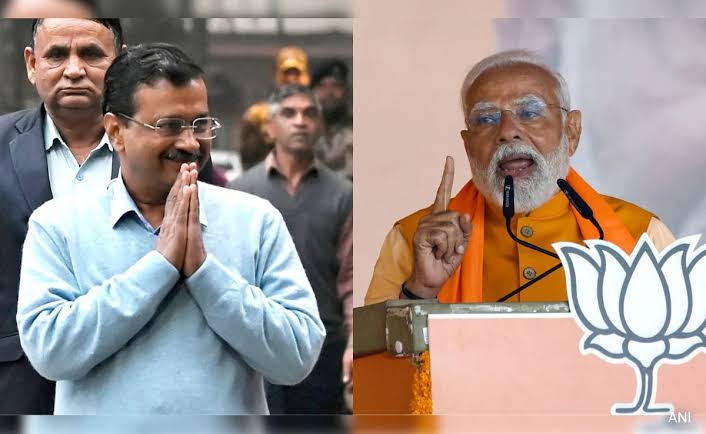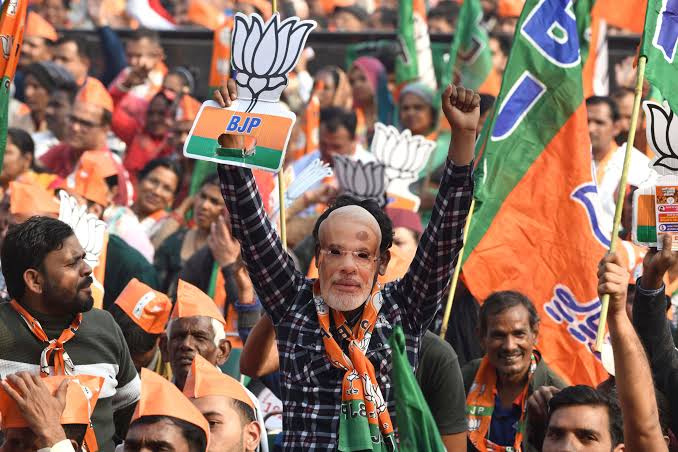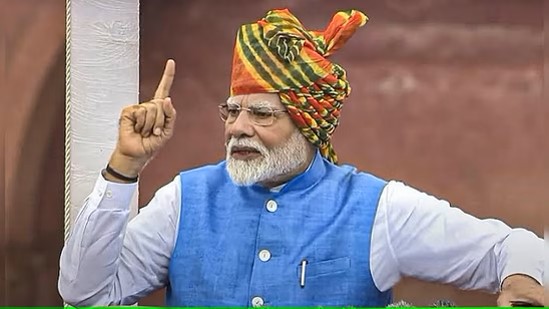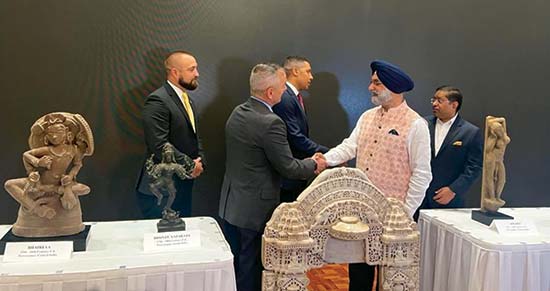As the results of the Delhi Assembly elections unfolded, the stark contrast between two neighboring houses on Firozeshah Road painted a vivid picture of the political shift in the capital. On one side, BJP’s Parvesh Sahib Singh Verma’s residence buzzed with celebrations, while just a few meters away, Delhi Chief Minister and AAP leader Arvind Kejriwal’s home remained eerily silent. The Bharatiya Janata Party, after nearly three decades, had managed to wrest control of Delhi from the Aam Aadmi Party, marking a historic moment in the city’s political landscape.
 Outside Verma’s house, the atmosphere was electrifying. Party workers and supporters chanted slogans of “Jai Shri Ram” and “Jo Ram ko laaye hain, hum unko layenge,” their voices blending with the sound of bursting firecrackers. The doors of his residence remained open to visitors, and Verma himself stepped out to greet his supporters, who showered him with flowers. It was a moment of triumph for the BJP, which had fought relentlessly to reclaim Delhi’s seat of power.
Outside Verma’s house, the atmosphere was electrifying. Party workers and supporters chanted slogans of “Jai Shri Ram” and “Jo Ram ko laaye hain, hum unko layenge,” their voices blending with the sound of bursting firecrackers. The doors of his residence remained open to visitors, and Verma himself stepped out to greet his supporters, who showered him with flowers. It was a moment of triumph for the BJP, which had fought relentlessly to reclaim Delhi’s seat of power.
Meanwhile, just across the street, the contrast was striking. Kejriwal’s home was heavily barricaded, with security personnel standing guard. The quietness around the house was almost deafening. There was no sign of party workers, and the usually bustling AAP headquarters, located right behind Kejriwal’s residence, wore a deserted look. The doors of the party office remained shut as media personnel gathered outside, awaiting any statement from the party leadership.
While Kejriwal himself chose to break his silence through social media, acknowledging the verdict and congratulating the BJP, his party members were noticeably absent from the public eye. Only a handful of AAP leaders, including Rajya Sabha MP Sanjay Singh, Punjab Chief Minister Bhagwant Mann, and senior leader Durgesh Pathak, visited Kejriwal’s residence throughout the day. The absence of party workers outside both the AAP headquarters and Kejriwal’s home reflected the deep sense of loss within the party.
A few kilometers away, at the Delhi BJP office on Pandit Pant Marg, the celebrations were in full swing. Saffron flags fluttered in the air as party workers, dressed in BJP colors, gathered in large numbers. The chants of “Jai Shri Ram” resonated through the area, alongside loud cheers for Prime Minister Narendra Modi. The mood was jubilant, with party members embracing the victory as a defining moment in Delhi’s political history.
For the BJP, this win was significant not just as a political comeback but as a statement of resurgence after a long absence from Delhi’s governance. The last time the party had won the assembly elections was in 1993. Over the past two elections, AAP had dominated the capital, winning over 60 out of 70 seats in both 2015 and 2020. But this time, the tide had turned.
As Delhi woke up to a new political reality, the emotions on both sides were raw. For BJP supporters, it was a moment of long-awaited celebration. For AAP, it was a moment of reckoning. The results signified more than just numbers; they reflected the shifting political sentiments in the national capital. As the dust settled, both parties faced new challenges—one in fulfilling its renewed mandate and the other in introspecting its setbacks.




